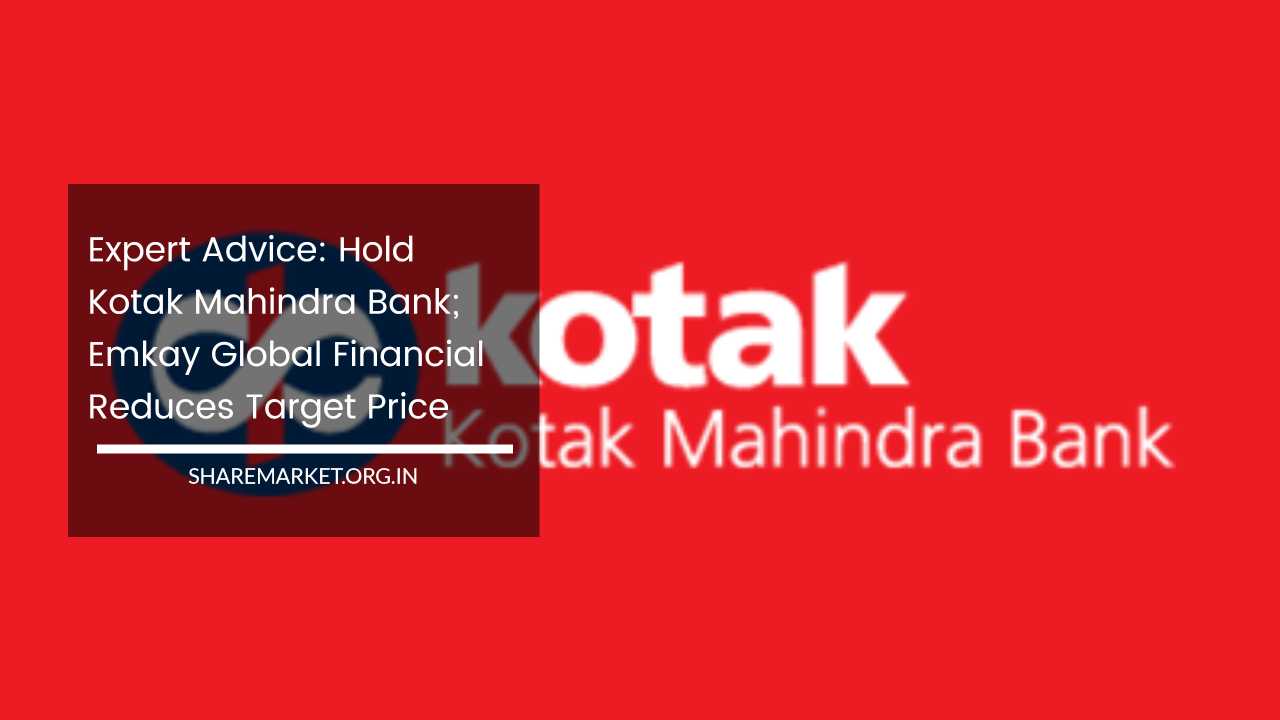Expert Advice: Hold Kotak Mahindra Bank; Emkay Global Financial Reduces Target Price

Kotak Mahindra Bank
Kotak Mahindra Bank is a prominent player in the Indian banking sector, known for its robust financial performance and well-established presence in the country.
Recent developments have raised some concerns, primarily related to a change in leadership and challenges to its financial metrics.
This article aims to delve deeper into these developments, analyze their potential implications, and explore the broader market context.
Change in Management
One of the central issues that have garnered attention is the change in management at Kotak Mahindra Bank. The Reserve Bank of India (RBI) recently approved the appointment of Ashok Vaswani as the Chief Executive Officer (CEO) of the bank.
This decision holds significance as Vaswani’s expertise lies in consumer, corporate, and digital banking segments. He was recruited to this key role by bypassing internal candidates within the organization.
This has led to questions about the impact of such a leadership change on the bank’s operations and future direction.
One aspect that deserves careful consideration is Vaswani’s role in retaining senior management personnel. His ability to build a cohesive and effective team will be instrumental in maintaining the bank’s operational efficiency and strategic direction.
Additionally, as the new CEO, Vaswani will bear the responsibility of carrying forward the legacy of former CEO Uday Kotak.
Uday Kotak remains a non-executive and non-independent member on the bank’s board, and the RBI has not raised any objections to this arrangement.
Financial Performance and Provisions
The financial performance of Kotak Mahindra Bank has been noteworthy, despite facing challenges in its net interest margin.
The bank managed to achieve a profit after tax (PAT) of $31.8 billion. This achievement demonstrates the bank’s resilience and ability to generate profits in a challenging economic environment.
One of the key metrics highlighting its financial health is the Return on Assets (RoA), which stands at a respectable 2.5 percent. A high RoA indicates the bank’s efficiency in utilizing its assets to generate earnings.
However, there are concerns related to Kotak Mahindra Bank’s provision for COVID-19-related risks. The bank’s provision buffer for such risks currently stands at 0.2% of its loan portfolio.
In contrast, peer banks maintain provisions in the range of 0.6% to 1.2%. This difference implies that Kotak Mahindra Bank may need to set aside additional provisions to safeguard against potential credit risks stemming from the ongoing pandemic.
The adequacy of these provisions will be crucial in determining the bank’s ability to weather economic uncertainties.
Impact of RBI’s Rebuke on Unsecured Loans
Another element impacting Kotak Mahindra Bank’s outlook is the Reserve Bank of India’s rebuke regarding unsecured loans.
The Reserve Bank’s concerns in this regard have raised questions about the bank’s loan portfolio and the potential impact on its growth and margin.
Unsecured loans, which lack collateral, pose a higher risk for banks, especially in times of economic instability.
Therefore, the bank’s ability to address the Reserve Bank’s concerns and mitigate risks in its loan portfolio will be a critical factor for its future performance.
Brokerage Firm’s Assessment
Emkay Global Financial, a brokerage firm closely monitoring Kotak Mahindra Bank, has made several significant assessments and adjustments in light of these developments.
The firm has notably reduced its target price for the bank, citing concerns related to the change in management. The target price has been revised from Rs 2,000 to Rs 1,955.
This downward adjustment reflects the perceived increased risks associated with the leadership transition and potential impacts on the bank’s future performance.
Additionally, Emkay Global Financial has cut its estimates for the bank’s performance in the fiscal years 2025-26.
The firm now projects a RoA of 2.1% and a Return on Equity (RoE) of 13% for these years. These adjusted estimates indicate a more cautious outlook for the bank’s profitability and asset utilization in the coming years.
It’s worth noting that brokerage firms play a crucial role in shaping investor sentiment and providing insights into the market’s perspective on specific stocks.
Market Context and Trends
To understand the broader implications of these developments, it’s essential to consider the broader market context and trends in the banking sector.
The Indian banking industry is undergoing significant transformations, with the adoption of digital technologies, changes in regulatory frameworks, and evolving customer preferences.
The COVID-19 pandemic has accelerated the digital transformation in the banking sector, making it imperative for banks to adapt swiftly and effectively.
In this context, the expertise of Ashok Vaswani in digital banking is particularly relevant. As digital banking gains prominence, his experience may prove valuable in positioning Kotak Mahindra Bank competitively in this evolving landscape.
However, it also underscores the importance of managing the bank’s risk exposure, particularly in the realm of unsecured loans.
Final Remarks
In conclusion, Kotak Mahindra Bank faces a pivotal moment with the change in its leadership and the challenges posed by the Reserve Bank’s concerns over unsecured loans. Emkay Global Financial’s reduced target price and adjusted performance estimates for the bank reflect the market’s apprehensions about these developments.
However, the bank’s strong financial performance, as indicated by its RoA and profit generation, underscores its resilience.
The ability of the new CEO, Ashok Vaswani, to navigate these challenges and maintain the bank’s legacy will be closely monitored.
Furthermore, the bank’s provisions for COVID-19-related risks will play a crucial role in determining its ability to weather economic uncertainties.
In this ever-evolving banking landscape, Kotak Mahindra Bank’s ability to adapt, manage risks, and capitalize on digital opportunities will be key factors in shaping its future performance.
Investors and stakeholders will continue to keep a close watch on these developments as they unfold, and the banking industry continues to transform in response to a changing world.

















